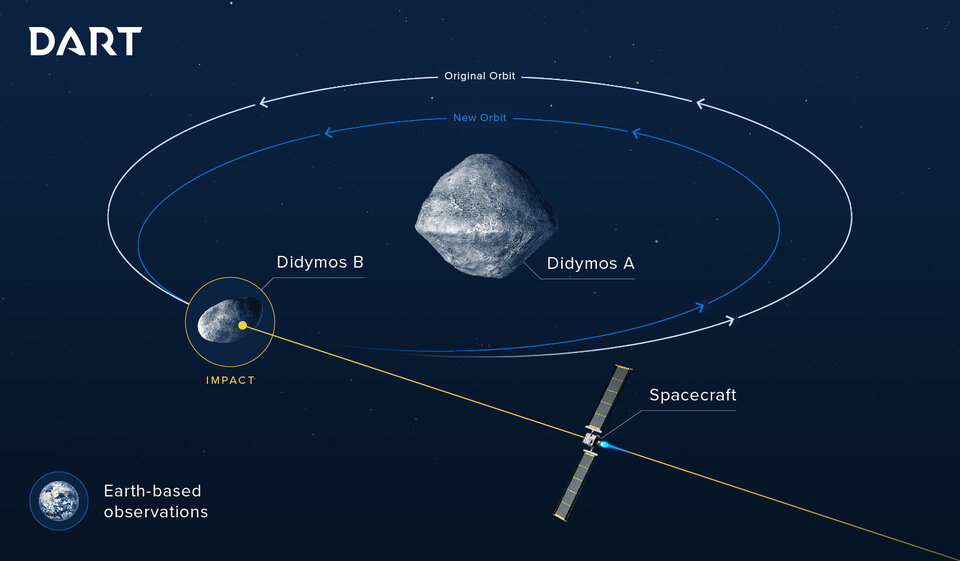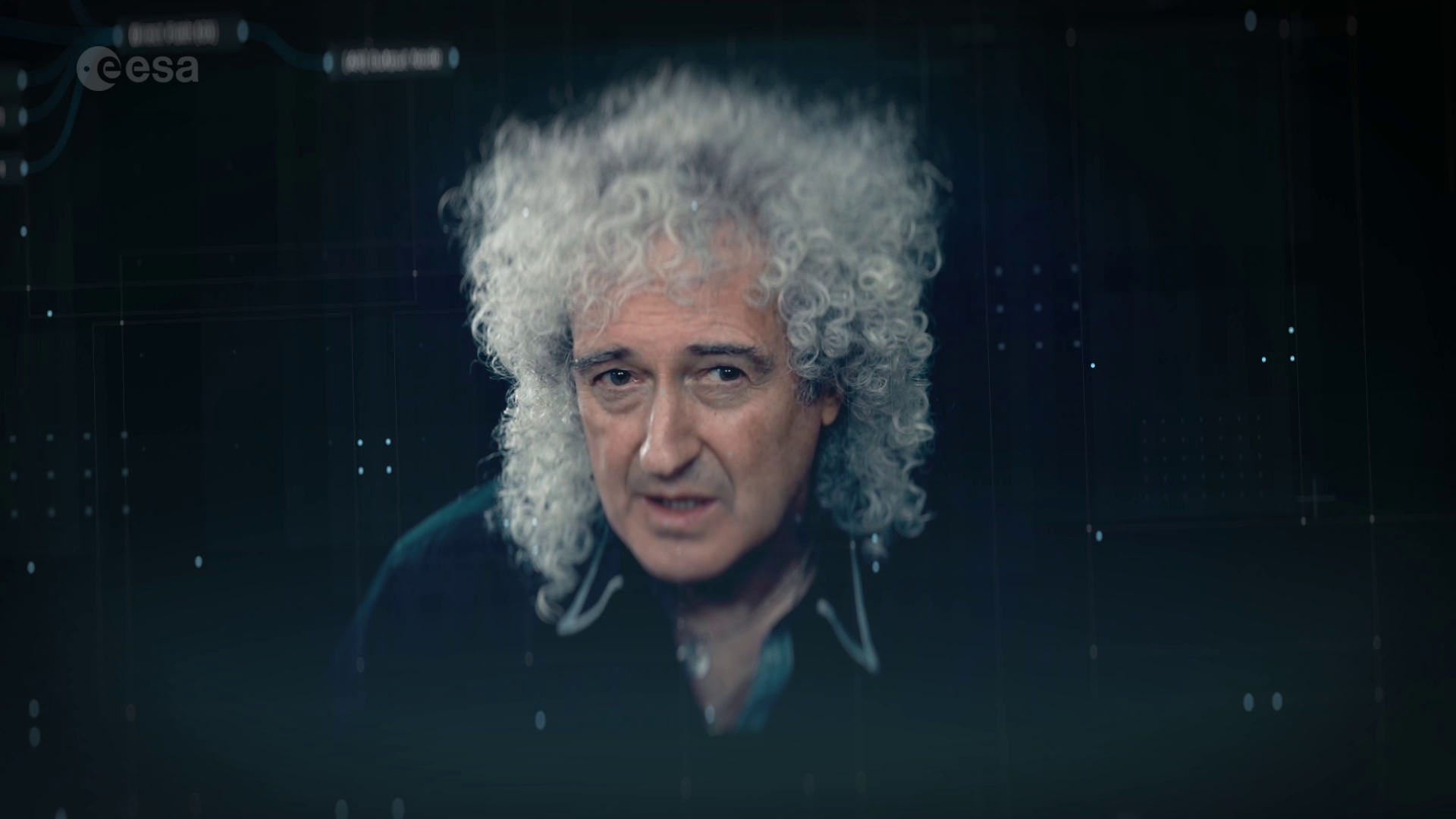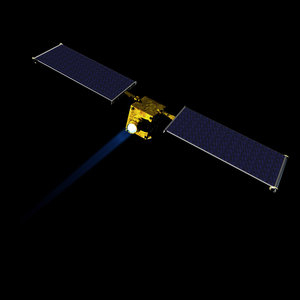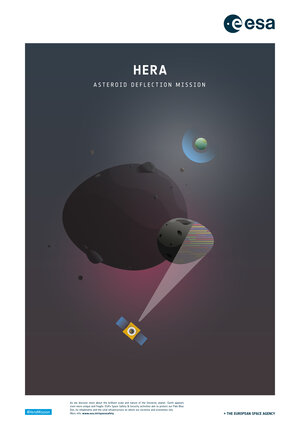Driving diamond into asteroid dust helps model planetary defence test
A trio of dust grains retrieved from an asteroid by Japan’s Hayabusa mission have helped model a grand-scale planetary defence experiment that could one day save Earth.
Diamond-tipped nanoindenter
A paper published in the Astronomy & Astrophysics scientific journal this week reports on ‘nanoindenter’ testing of a trio of asteroid grains returned by Hayabusa from the dusty face of the Itokawa asteroid as well as samples from the Chelyabinsk meteor that exploded over Russia in 2013.

The nanoindenter, – a precision pressing tool with a pyramid-shaped diamond tip measuring just a few millionths of a millimetre – was driven into the otherworldly samples, then retracted, to measure their comparative hardness and elasticity. This testing provides a fuller picture of asteroids’ physical properties – and how one might react to the titanic impact taking place in approximately three years’ time.
NASA’s Double Asteroid Redirect Test is due to launch in summer 2021, to impact the smaller of the Didymos asteroid pair, in orbit between Earth and Mars, in autumn 2022. Then, in 2024, ESA’s proposed Hera mission would travel to the asteroid to perform a detailed post-impact survey. The two mission teams are working together within the Asteroid Impact Deflection Assessment collaboration, or AIDA for short.
Analysing meteorites to model asteroids
One problem for the two missions is that they are aiming at a largely obscure target: hundreds of millions of kilometres away in space, the asteroid pair appears from the ground as no more than a single bright point – thousands of times fainter than the faintest stars visible to the naked eye. Details of their mass and orbital motion can be derived, but little of their surface conditions and make-up.

Instead, asteroid researchers do what they can with the resources they have, including fallen meteorites.
“The success of AIDA and comparable asteroid deflection efforts depends on good knowledge of the physical properties of the object to be deflected,” explains study co-author Josep M. Trigo-Rodriguez of Spain's National Research Council at the Institute of Space Sciences (CSIC-IEEC). “We had previously performed nanoindentation testing of Chelyabinsk samples, with the idea of extrapolating our results to the DART impact.

“Then came the welcome opportunity to perform comparable testing on samples of the fine surface grains known as ‘regolith’ returned by Japan’s Hayabusa sample return mission,” explains Safoura Tanbakouei, Ph.D. student at CSIC-IEEC and lead author. “This is unique unmodified material taken directly from the surface of an asteroid and brought back to Earth.”
Grains from space
Hayabusa was the world’s first mission to retrieve asteroid material. Beset by radiation damage and other technical problems, at one point the stricken spacecraft even crash-landed on the rubble pile Itokawa asteroid. But Japan Aerospace Exploration Agency (JAXA) controllers nursed the valiant spacecraft back to Earth.
In 2010, after a six billion kilometre trip, Hayabusa burnt up in the atmosphere, but its heat-shielded sample container parachuted down to the Australian outback. Until scientists retrieved it, they had no idea if it actually had any asteroid samples aboard; the container seemed to be empty.

But scraping the container’s interior followed by detailed scanning with an electron microscope revealed around 1 500 tiny particles of extraterrestrial origin. Extremely precious, these Itokawa grains have become the focus of intense scientific study around the world.
Tiny testing
“Their small size presented potential challenges,” adds Prof. Jordi Sort of the Catalan Institution for Research and Advanced Studies at the Autonomous University of Barcelona (UAB). “The three grains we received are only about a thousandth of a millimetre each. By comparison our Chelyabinsk samples were a hundred times larger in scale.

“However we still managed to test successfully, using a pyramidal indenter with a tip radius of about 50 nanometres – millionths of a millimetre – across.”
The Itokawa grains provided by JAXA had been placed in resin, then polished using diamond paste before the nanoindentation process was carried out at UAB.

Josep adds: “Our results reveal similar hardness for both sets of samples, but the Itokawa regolith grains possess enhanced elasticity – which has significant implications.
“There is fine-grained regolith covering the surface of many asteroids, theoretically produced by the ongoing process of impacts on asteroid surfaces as well as flaking of rock due to temperature extremes. The summary of our findings is that these surface regolith particles are more compacted than the material beneath them – a natural consequence of their having survived long exposure times on an asteroid’s surface – indicating in turn an enhanced ability to absorb elastic energy during an impact.”

Driving up dust
These results offer insight into how surface regolith will respond to impacts – including DART’s impact. To quote Isaac Newton, “for every action is an equal and opposite reaction”: the more mass that is released in the opposite direction from the impact is directly proportional to the deflection that is achieved.

“Accordingly, striking a region of higher dust should boost the efficiency of DART’s momentum transfer, compared to simply excavating subsurface material,” notes Hera’s lead scientist Patrick Michel, CNRS Director of Research of France’s Côte d'Azur Observatory, also a co-author of the study.
“DART’s impact will let us test our modelling of crater excavation and plume formation for real. Obviously the dimensions of the actual crater will need to be measured, which can only be achieved by a close-up look from another spacecraft – the objective of ESA’s Hera mission.”


Access the video
The Hera mission will be presented to ESA’s Space19+ meeting this November as part of the Agency's Space Safety programme, where Europe’s space ministers will take a final decision on flying the mission.







